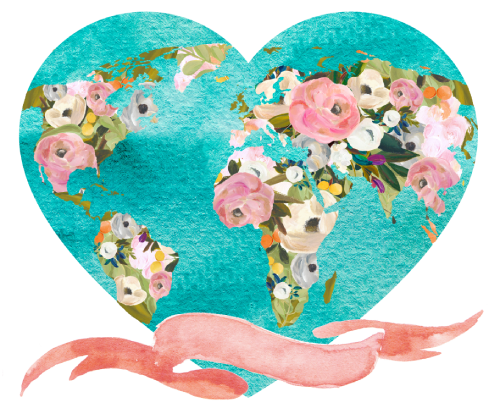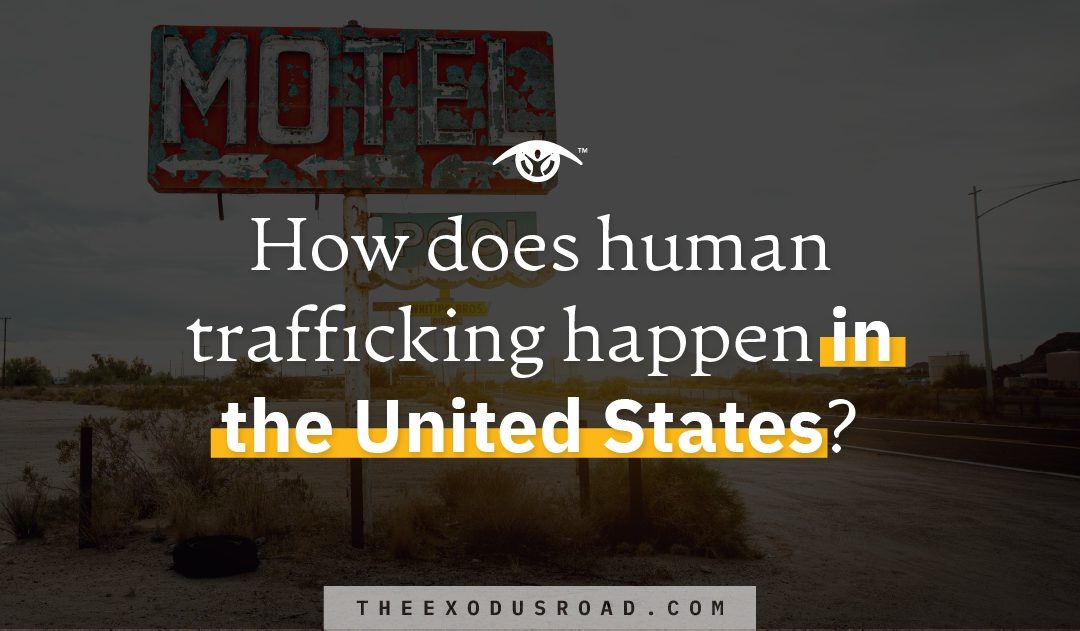An Update from The Exodus Road
We all want safety and stability. People who end up in human trafficking are no different. However, having few resources to create that safety and stability for themselves, victims of human trafficking can end up in a desperate cycle of exploitation. You may assume trafficking for labor or sex is something that happens in lands far away, but human trafficking happens everywhere, including in the United States. Keep reading to learn more about human trafficking in the United States.
WHERE DOES HUMAN TRAFFICKING IN THE U.S. HAPPEN?
Human trafficking happens throughout the United States. It happens along on our busiest highways, crossing through our official border zones, and using interstate bus lines and private cars.
But some places in the U.S. have higher levels of human trafficking than others. According to calls to the US National Human Trafficking Hotline, the areas with the highest number of reported cases are:
- Nevada
- Florida
- California
- Texas
- The Great Lakes region, and
- The New York area.
HOW MANY PEOPLE ARE TRAFFICKED IN THE UNITED STATES?
Each year, between 14,500 and 17,500 people are estimated to be trafficked into the United States. They are foreign nationals from 59 countries, most from Mexico, many from Southeast Asia, and China. In 2020, a report from the Human Trafficking Institute found 41% of trafficked people in the United States are from Mexico. The B-2 tourist visa is most often used for sex trafficking, while the H-2A temporary agriculture worker visa is used for labor trafficking.
In 2019, there were 11,500 reported cases of human trafficking in the US. The majority of those — 59% — are US nationals, and 90% are women trafficked for sex. Poverty is the biggest indicator for human trafficking and the official poverty rates have gone up between 2019 and 2020 from 10.5% to 11.4%.
WHO ARE THE COMMON VICTIMS OF HUMAN TRAFFICKING IN THE UNITED STATES?
IMMIGRANTS
In the United States, immigrants are most at risk of human trafficking as they are looking for work and end up in forced labor. There are high numbers of cases among immigrant women in Texas and California. They are around 20 years old and do not have citizenship, education, or the ability to speak English. Passports may be taken away to emphasize how the victim is owned by the trafficker. Drugs may be used so the victims become addicted and dependent on their traffickers for their next high.
WOMEN
It is not just immigrants who are at risk of human trafficking in the United States. U.S. citizens are trafficked as well, and 92% of US citizens trafficked are women. Of those, 87% of the time they are trafficked for sex, according to the Counter-Trafficking Data Collaborative (CTDC).
VULNERABLE POPULATIONS
People who have been abused and people who are addicted to drugs and/or alcohol are targets for labor and sex trafficking. Children in the welfare system, the LGBTQ+ and Native American communities seem to be more vulnerable to the predatory tactics of human traffickers.
Traffickers are usually the same nationality as their victims, operating independently or in a loosely organized crime network, using the internet to lure people with promises of “living the high life.” The deception can also happen at home with corrupt intimate partners and even trusted relatives and family friends.
IDENTIFYING HUMAN TRAFFICKING IN THE U.S.
According to a study conducted by Polaris, 42% of trafficking victims in the United States reported that buses were used during their exploitation. They advise keeping an eye out for children traveling without an adult, children traveling alone during the school day, and people who are uncertain about who paid for their ticket.
Human trafficking transactions happen at roadside hotels, seaports, airports, rest areas, and truck stops. A group called Truckers Against Trafficking educates people about things to look for. For example, a victim may be in a vehicle with out-of-state plates, may ask questions indicating that they do not know where they are, and may wear clothes that are not right for the local weather.
All 50 states and DC have laws against sex trafficking. The US government has a low level of corruption and therefore a capacity to charge people and businesses with human trafficking.
IS HUMAN TRAFFICKING THE SAME AS HUMAN SMUGGLING?
Human smuggling and human trafficking may look the same on the surface, but they are very different. Human smuggling is voluntary, perhaps with life-threatening risks involved, but those being smuggled are not being exploited and trafficked for labor, sex, or organs. If someone being smuggled becomes exploited for labor, sex, or organs, it then becomes human trafficking.
WHAT SHOULD I DO IF I SUSPECT HUMAN TRAFFICKING IN THE U.S.?
If you believe you may be a victim of human trafficking or suspect someone you know is, you can call the National Human Trafficking Hotline at 1-888-373-7888 or text 233733 which is completely confidential and available 24 hours a day.
If you need help regarding human trafficking in the US, these resources will connect you with skilled professionals who are ready to be of support.
WHAT CAN I DO ABOUT HUMAN TRAFFICKING IN THE UNITED STATES?
A great first step in the fight against human trafficking is to get educated and build awareness. You can take our totally free two-module course on human trafficking, TraffickWatch. Learn more here: theexodusroad.com/traffickwatch
Consider becoming a partner with Operation Love Global, a non profit in Ramona, CA championing to end human trafficking. Funds donated will help meet immediate needs such as food and sponsoring children’s education for the at-risk in slum communities, missionary support & so much more. To donate, click the button that says make it a monthly donation using this link http://ow.ly/ewSs50Ka3FG.

